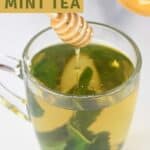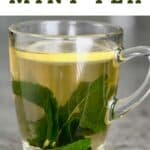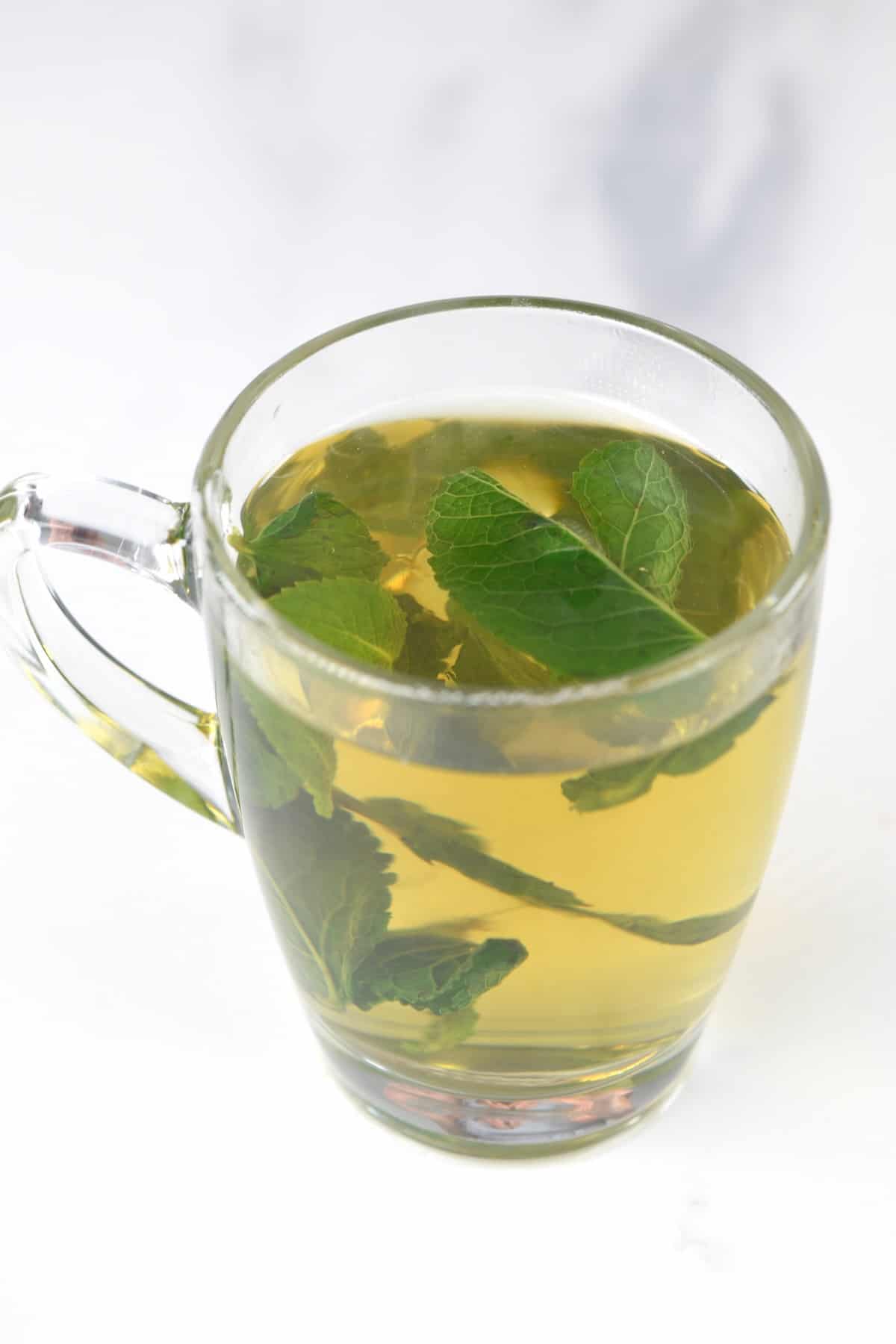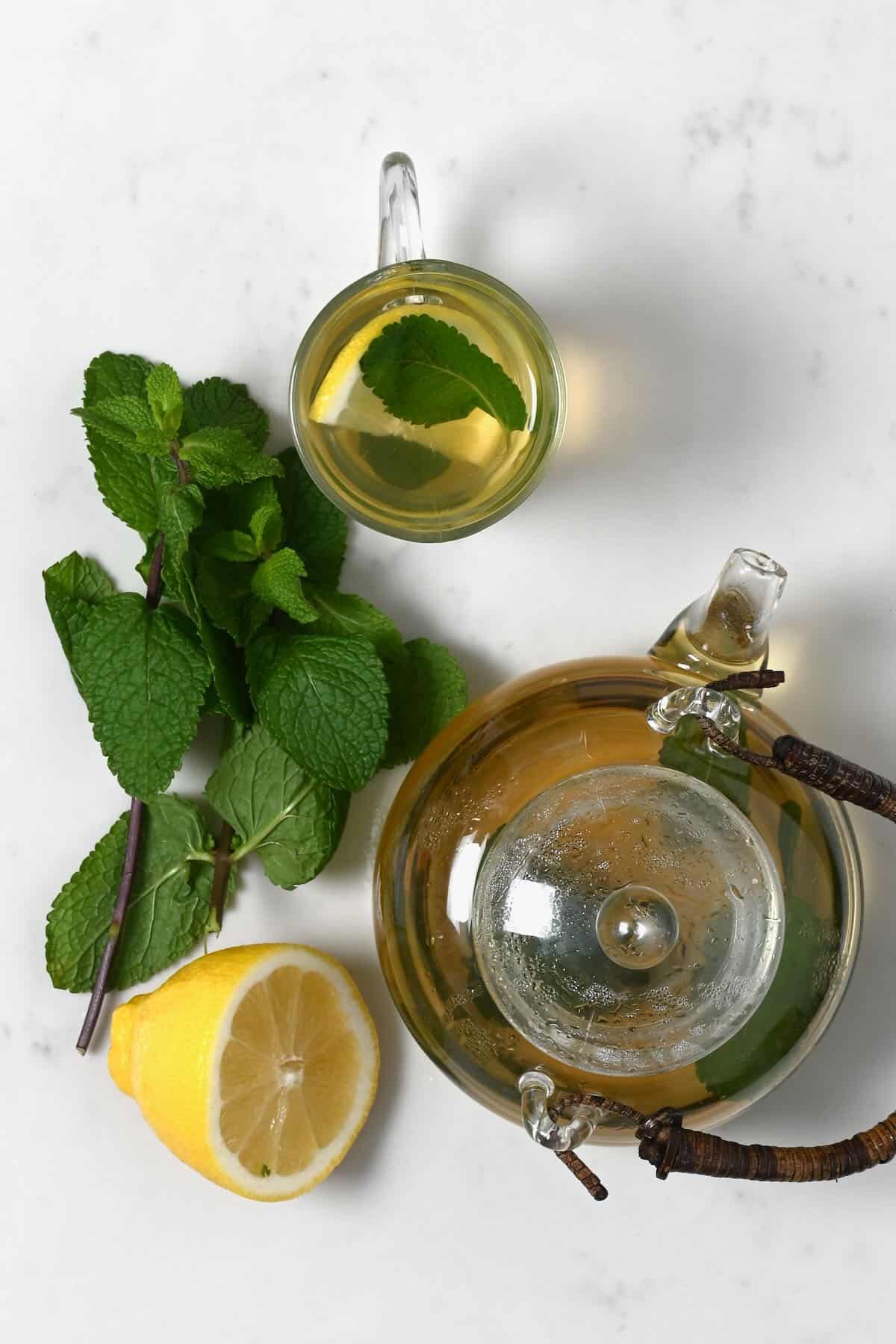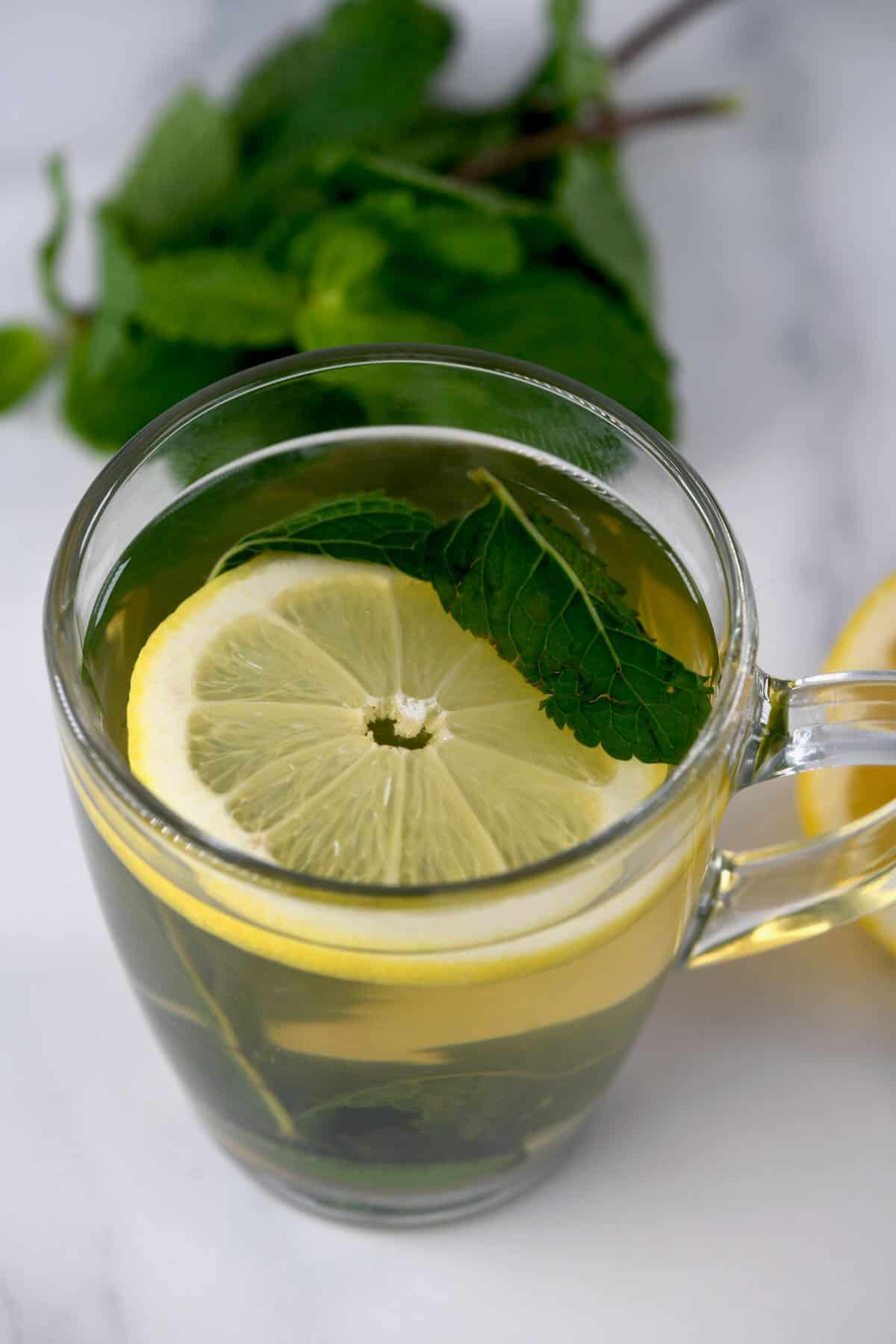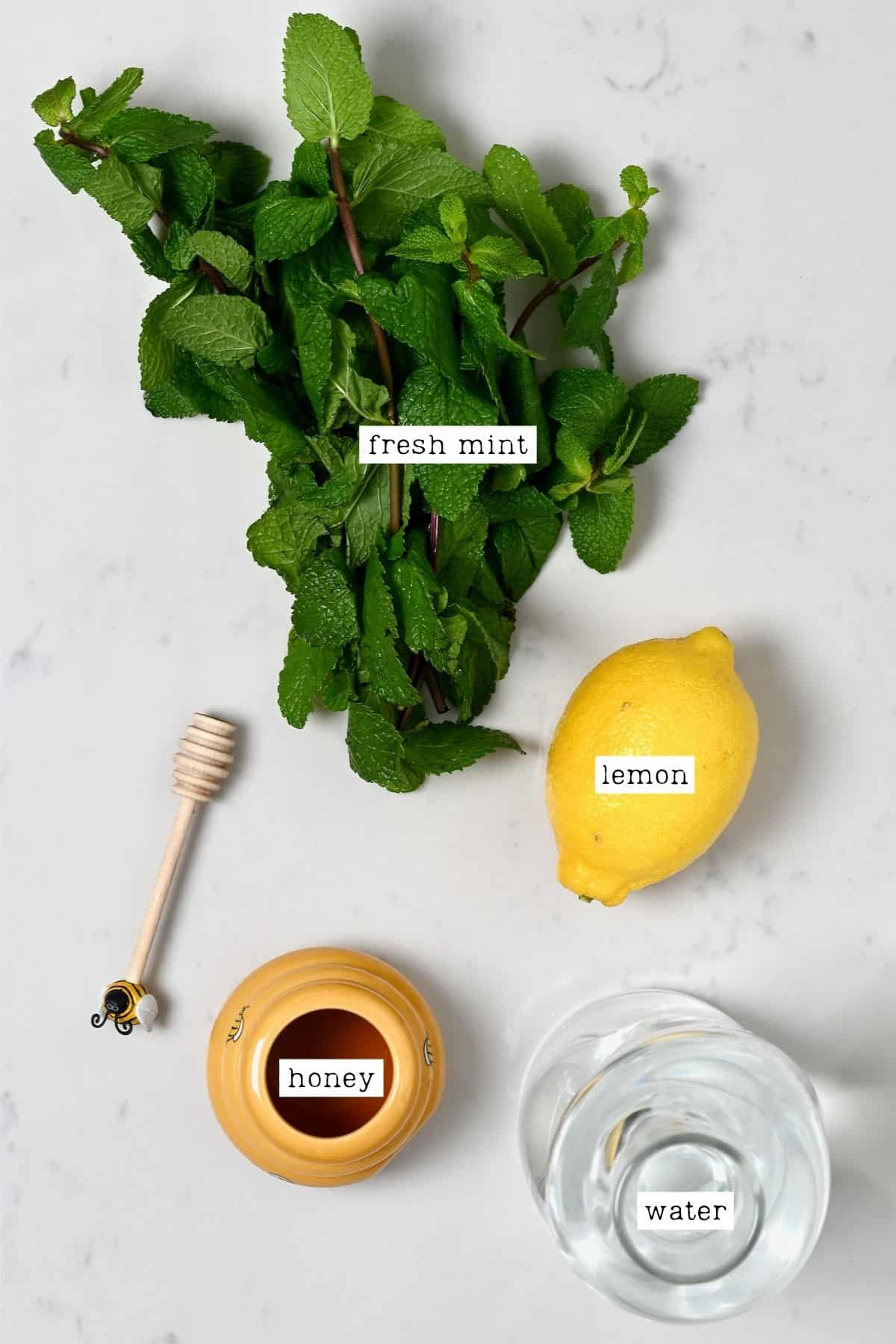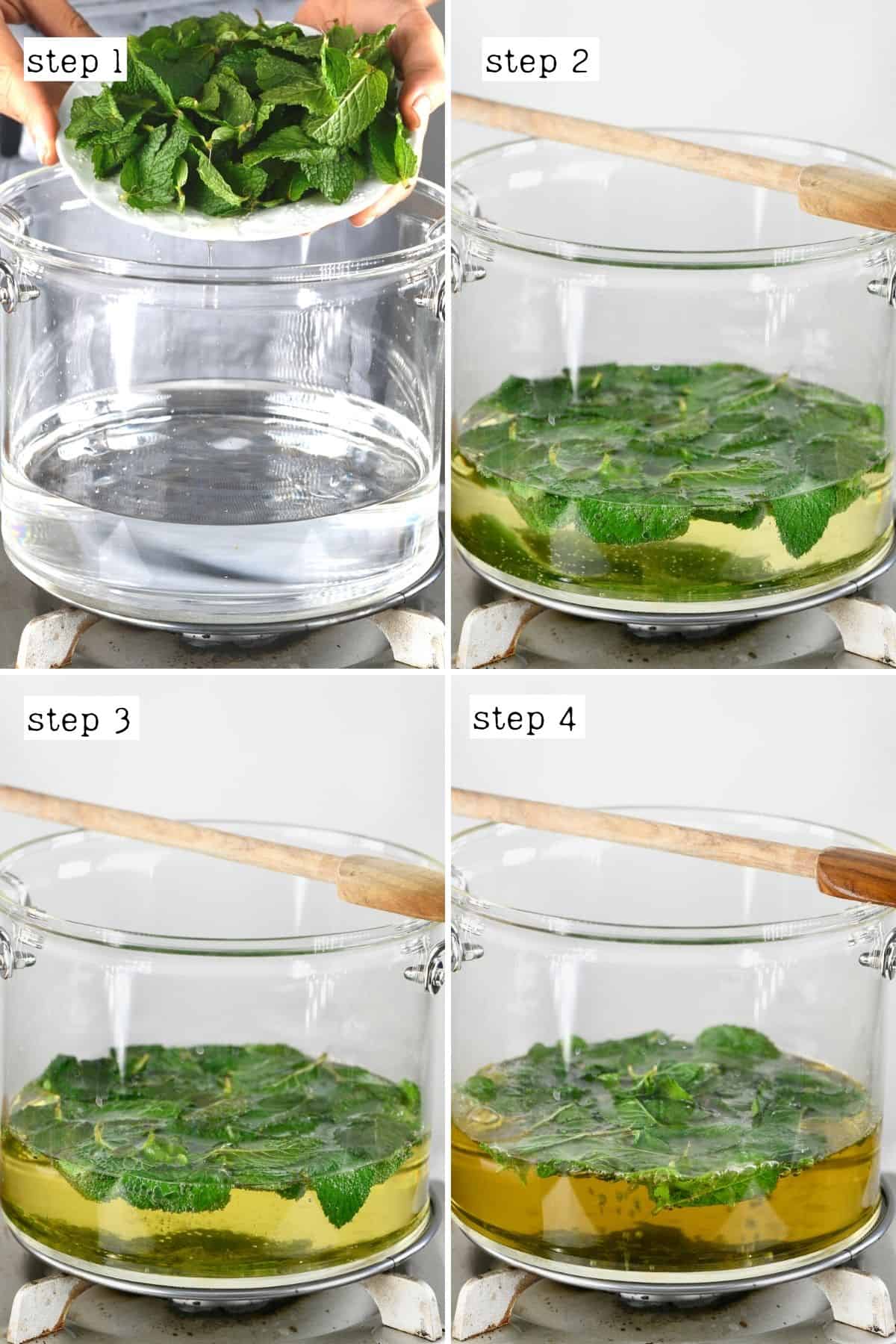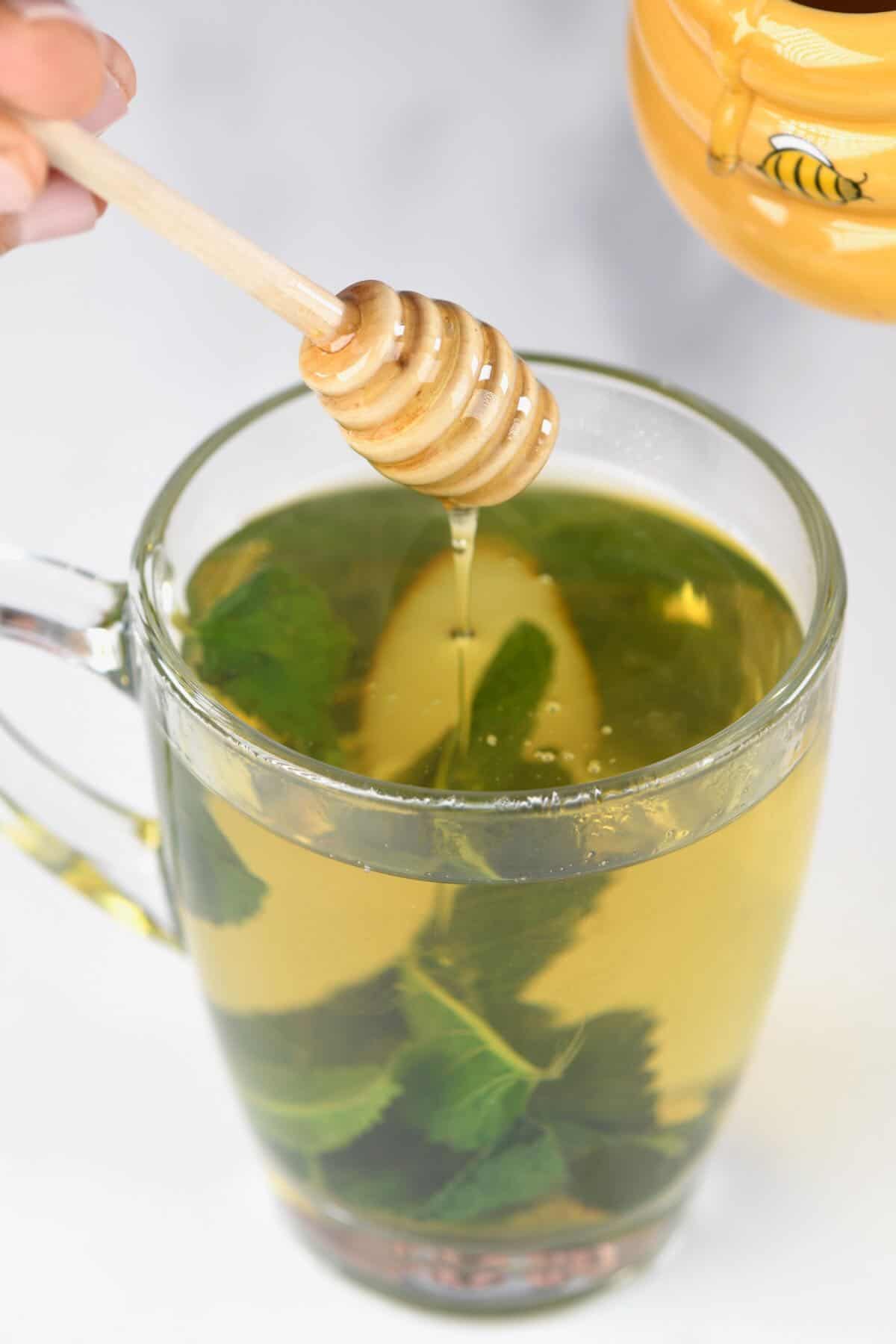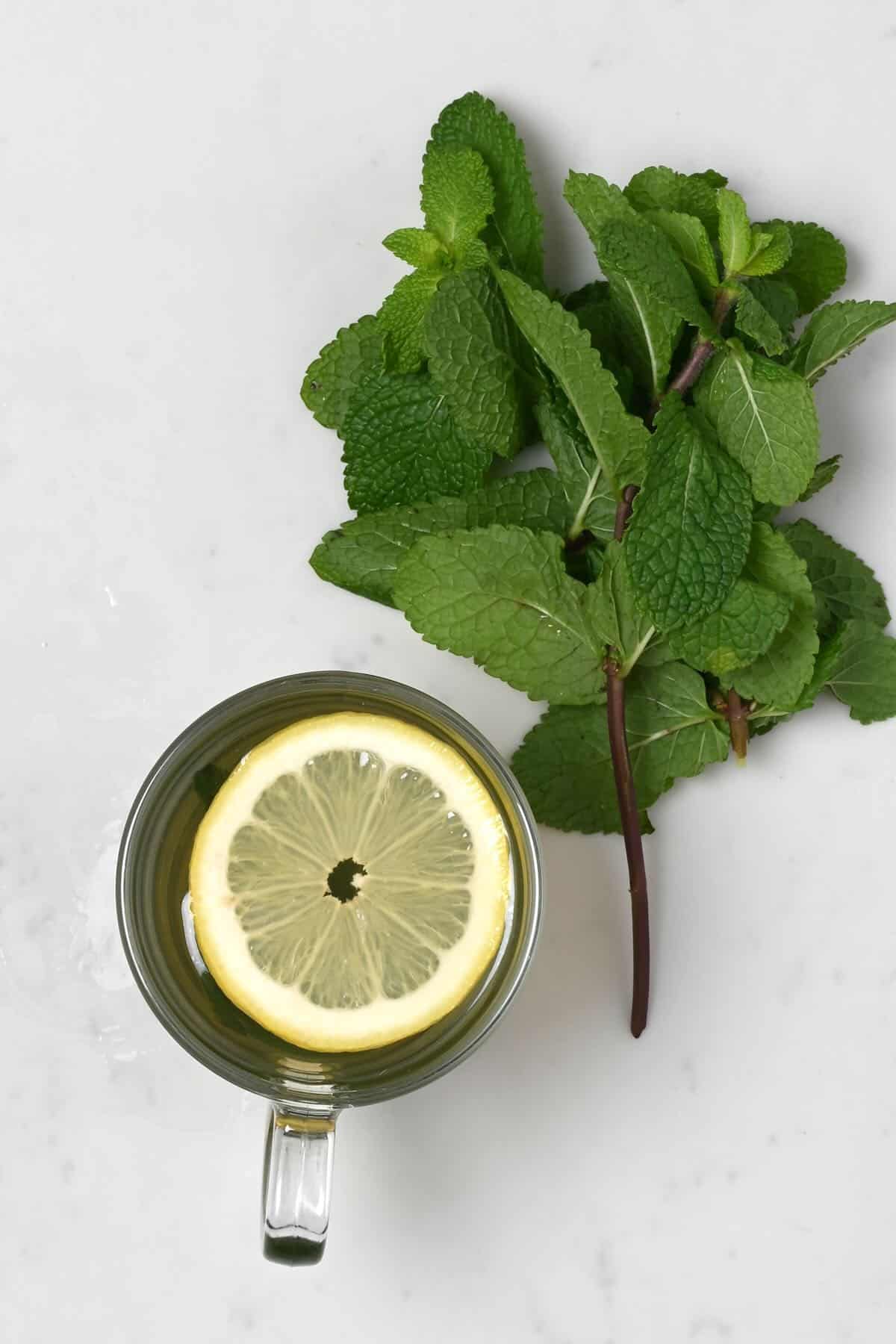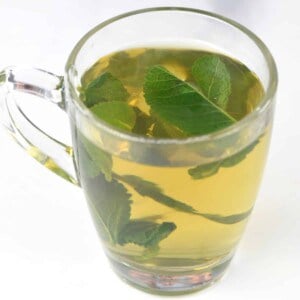We’re in the thick of “sniffles and sore throat” season (aka cold/flu season). So, I’m loving focusing on consuming additional immune-boosting foods, turning to recipes like ginger-turmeric health shots, ginger butternut squash soup, and this warm and soothing fresh mint tea (honey citrus mint tea). With a combination of fresh mint leaves, fresh lemon juice, and a drizzle of honey (or vegan dandelion honey/another sweetener) all infused in hot water, this homemade mint tea not only makes for a delicious and healthful winter drink but is packed with health benefits, too (not surprising for a drink loosely related to the similar Starbucks beverage dubbed “medicine ball tea”). However, you can also happily enjoy this fresh and bright caffeine-free drink year-round (I certainly do, along with Lebanese mint lemonade!)
What is medicine ball tea?
As a Lebanese woman, I’ve been drinking mint tea for YEARS (I mean, we add mint to EVERYTHING). However, a follower recently let me know this recipe reminded them of Starbucks Medicine Ball Tea. Medicine Ball tea was initially a Starbucks secret menu item. However, it is now part of the official drink lineup in the US after gaining popularity on social media for its health benefits and relief for those suffering from a cold/flu. The drink combines a base of steamed water and lemonade, a Teavana jade citrus mint tea bag, Teavana peach tranquility tea, and honey to sweeten. In comparison, this homemade “cold buster” honey citrus mint tea contains far fewer calories and sugar content, with all-natural ingredients, made with a hot water base infused with fresh mint leaves, natural lemon juice, a drizzle of honey. Plus, the additional peach flavor is 100% optional (and doesn’t significantly impact the healthfulness of this beverage anyway). The result is an all-natural, caffeine-free, dairy-free, super comforting, and delicious homemade mint tea to unwind and relax.
The benefits of mint tea (with lemon and honey)
It’s probably no surprise that this tea comes with many health benefits, especially for the cold season. Lemon and honey and common flavorings for cold/flu/sore throat medication and the combination of the lemon, honey, and mint in a warm herbal tea make for a super soothing drink for a sore throat. However, there are several other main health benefits of this fresh mint tea:
Benefits digestion: peppermint tea can help ease bloating, digestion, cramps, and offer (temporary) relief for those suffering from IBS. It can also reduce nausea! Cold and flu relief: not only does the menthol aroma of this fresh mint tea help with congestion, but mint tea also has some anti-parasitic, antiviral, antibacterial, and anti-inflammatory properties that may help to somewhat alleviate symptoms. Boost cognitive function: some research shows that peppermint tea could help improve memory, concentration, and mood. Relieve tension headaches: peppermint has pain-relief properties (as well as a muscle relaxant), which can help alleviate tension headaches and migraines.
Plus, you can read more about the science-backed benefits of peppermint tea for more information! This mint leaf tea is also combined with immune-boosting, detoxing fresh lemon juice. Not to mention raw honey, which contains antibacterial, antiviral, antioxidant, and immune-boosting properties that can help fight infection and boost digestive health. Looking for more soothing warm tea recipes? Check out this pineapple skin tea (anti-inflammatory tea), ginger tea, or this post on making green tea (with no bitterness)!
The honey citrus mint tea ingredients
This basic recipe for fresh mint tea (aka honey citrus mint tea, aka “medicine ball tea”) requires just 3 ingredients, plus water. The combination is light, soothing, and packed with healthful properties:
Mint leaves: you can experiment with the type of mint leaves you use for this fresh mint tea. Peppermint and spearmint are the top options. I also particularly like chocolate mint. However, there are several types: apple mint, orange mint, pineapple mint, etc., so experiment.
Peppermint vs. Spearmint tea? If you want a slightly lighter, sweeter mint tea, I recommend spearmint tea. However, for a slightly more robust, slightly ‘sharper’ flavor, make fresh peppermint tea (because of the high menthol).
Lemon: will balance the flavors well and add extra health benefits and soothing quality. Honey: you can subtly sweeten the mint tea with honey. For a vegan option, you could use dandelion honey or another sweetener. Use a little erythritol/swerve for a sugar-free mint tea, etc. Water: to make the base for the fresh mint tea. Use filtered water if preferred.
Optional add-ins
It’s really easy to make fresh mint tea your own with your add-ins of choice, including:
Fruit juice: orange, apple, and peach juice (just a few Tbsps) are optional additions to the mint tea recipe that will infuse the herbal tea with extra flavor and naturally sweeten the drink. Moroccan mint tea: (aka Maghrebi mint tea) combines this spearmint fresh mint tea with Gunpowder green tea (use any high-quality loose-leaf green tea in a pinch). Use 1 tsp of the green tea per serving. Starbucks Medicine Ball Tea: now name “honey citrus mint tea” on their menu; if you want to make this fresh mint tea taste even more similar to the original, you could use the Teavana tea jade citrus mint and peach tranquility tea bags as your tea base (topped up with a few extra mint leaves). OR add peach tea to the recipe as written. Black mint tea: add your favorite black tea bag to the fresh mint tea recipe. Mint green tea: add a tea bag of your favorite green tea to the mint leaf tea recipe (comes with even more health benefits and gentler caffeine than coffee, for an energy boost!). Vanilla: usually something I reserve for fresh mint iced tea, add vanilla extract to taste (usually just a drop). Ginger mint tea: add a 1-inch piece of ginger root to the tea per serving (increase to taste). Feel free to slice/chop it to better infuse. I recommend adding the ginger to the water first for 5 minutes. Then the mint for a further 5 minutes before serving. Lavender mint tea: lavender has a robust flavor, so you don’t need much (about 1tbsp fresh lavender leaves (or 1 tsp dried food-grade lavender) per mugful. Adjust to personal taste). A pinch of dried/fresh rosemary would also work in the lavender mint tea. Chamomile mint tea: similar to the above, you don’t need much. Use a ½-1:1 ratio of edible chamomile flowers to mint leaves. You can also make a version of this mint leaf tea with both chamomile and lavender! Basil mint tea: use between half the amount to an equal amount of basil to mint (adjust to personal taste), and gently rub to help release the oils.
How to make fresh mint tea
To make hot tea
First, wash the mint leaves well, especially when freshly picked from an outdoor plant. Then add the leaves and water to a saucepan and bring to a boil over medium-low heat, allowing it to boil for 2 minutes before turning off the heat. Alternatively, you can boil the water in a kettle and pour it directly over the leaves in your mug/teapot, leaving it to steep for several minutes. However, I don’t find the flavor infuses as much this way. Then, allow it to steep for a further minute or two before transferring to a teapot or mug with a few slices of lemon and a drizzle of honey (best added after the tea cools slightly). Enjoy! The longer you steep the tea, the stronger it will become. I usually enjoy my first cup after the above. The second cup is then more robust, and the third is even more so (and usually requires a little extra drizzle of honey or can be diluted with some ice cubes/water and turned into an iced version).
To make fresh mint iced tea
After steeping the tea, transfer it to the fridge to chill for 2-3 hours (or overnight). Then serve over ice with a few fresh mint leaves.
Top tips
Muddle the mint slightly: I usually roll/twist the leaves in my hands before adding them to the water. However, you could also use some kind of muddler in the saucepan. This will help the mint leaves release their oil into the mint leaf tea for a more intense flavor. To keep a teapot warm: if you’re making enough fresh mint tea to fit a teapot, I like to first fill it with boiling water and allow that to sit for several minutes before adding the tea. This seems to help keep it warmer for longer (if you don’t own a tea cozy). Adjust the ingredients: it’s very easy to adjust the amount of mint leaves, lemon, and honey all to taste. So feel free to do so for a personalized fresh mint tea! The color will vary: practically from batch to batch based on what type of mint you’re using, how much, the steeping time, etc. To filter out the leaves: if you want to keep the leaves in the tea but not have them ‘in the way,’ you can serve the honey citrus mint tea in a cafetiere/French press. The plunger will filter the leaves and muddle them slightly for a more robust minty flavor. The steeping: this can vary based on how strong you want the homemade mint tea and which type of mint you’re using.
More soothing drink recipes
Easy masala chai (Indian spiced tea) Hot mulled ‘spiced’ apple cider How to make a matcha green tea latte Simple hot cocoa recipe Healing mushroom coffee (adaptogen coffee) How to Make Cinnamon Tea How To Make Hibiscus Tea Homemade Turmeric Tea How To Make British Tea
If you try this fresh mint tea recipe, I’d love to hear your thoughts/questions below. Also, I’d appreciate a recipe card rating below, and tag me in your recipe recreations on Instagram @Alphafoodie!

